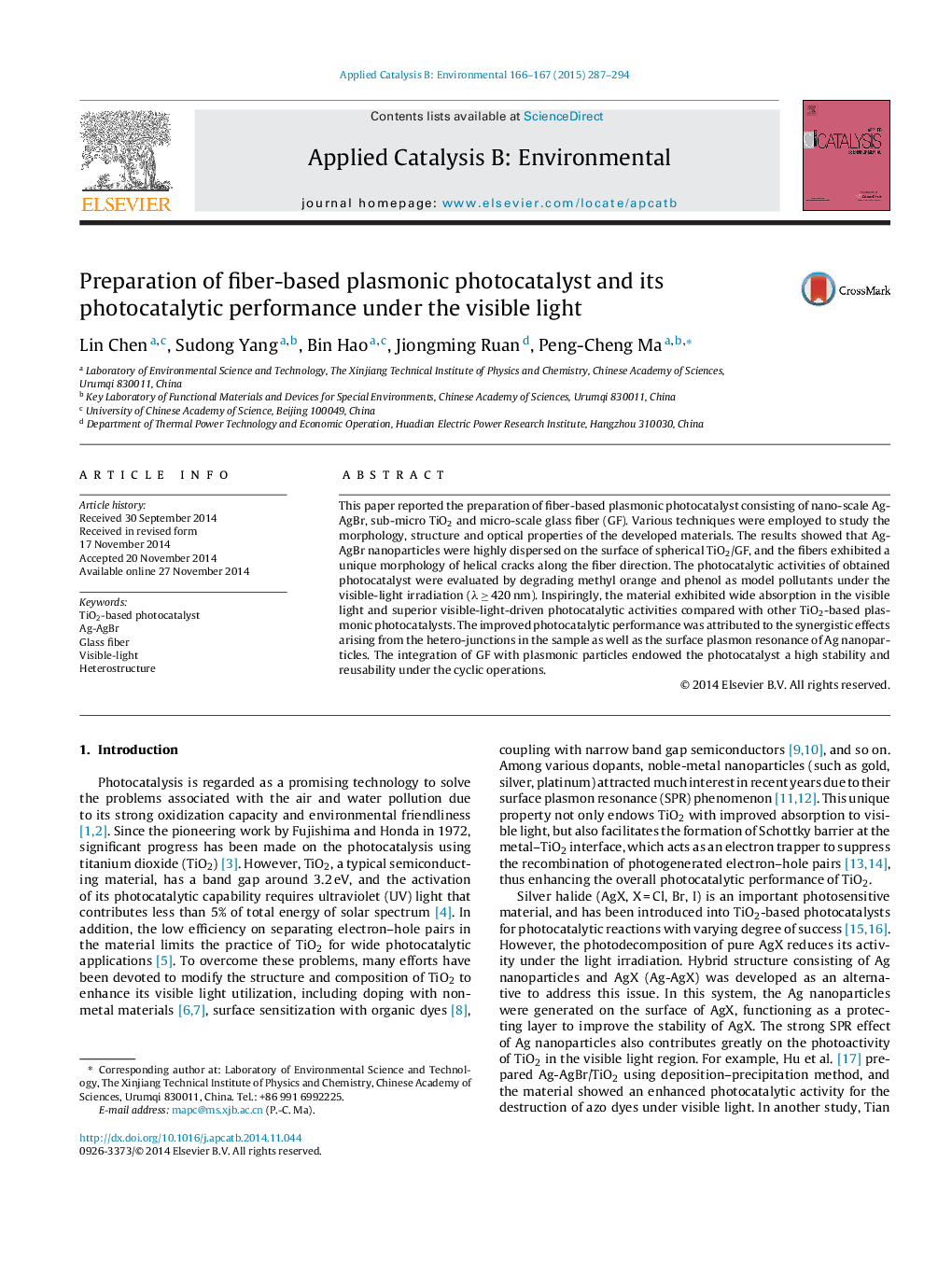| Article ID | Journal | Published Year | Pages | File Type |
|---|---|---|---|---|
| 45721 | Applied Catalysis B: Environmental | 2015 | 8 Pages |
•Fiber-based plasmonic photocatalyst was developed.•The photocatalyst showed enhanced photocatalytic property under the visible light.•High stability and recyclability of photocatalyst was observed.•The enhancement originated from the separation of electron–hole in the material.
This paper reported the preparation of fiber-based plasmonic photocatalyst consisting of nano-scale Ag-AgBr, sub-micro TiO2 and micro-scale glass fiber (GF). Various techniques were employed to study the morphology, structure and optical properties of the developed materials. The results showed that Ag-AgBr nanoparticles were highly dispersed on the surface of spherical TiO2/GF, and the fibers exhibited a unique morphology of helical cracks along the fiber direction. The photocatalytic activities of obtained photocatalyst were evaluated by degrading methyl orange and phenol as model pollutants under the visible-light irradiation (λ ≥ 420 nm). Inspiringly, the material exhibited wide absorption in the visible light and superior visible-light-driven photocatalytic activities compared with other TiO2-based plasmonic photocatalysts. The improved photocatalytic performance was attributed to the synergistic effects arising from the hetero-junctions in the sample as well as the surface plasmon resonance of Ag nanoparticles. The integration of GF with plasmonic particles endowed the photocatalyst a high stability and reusability under the cyclic operations.
Graphical abstractFibre-based plasmonic photocatalyst with hierarchical structures was developed. The materials showed enhanced photocatalytic performance and reusability under the visible light thanks to the efficient capability to separate photo-generated electron–hole pairs in the sample.Figure optionsDownload full-size imageDownload as PowerPoint slide
